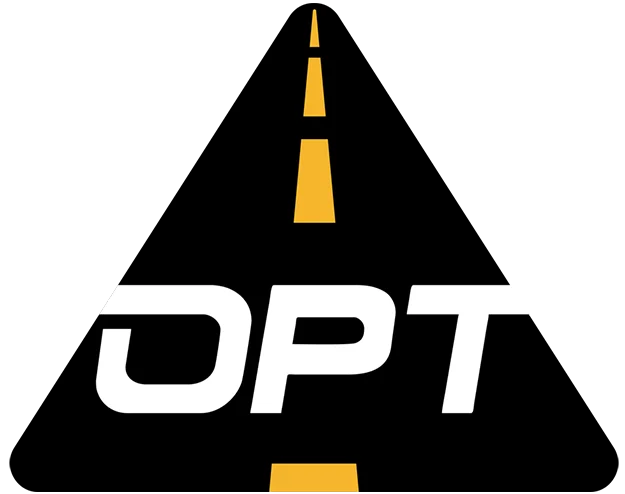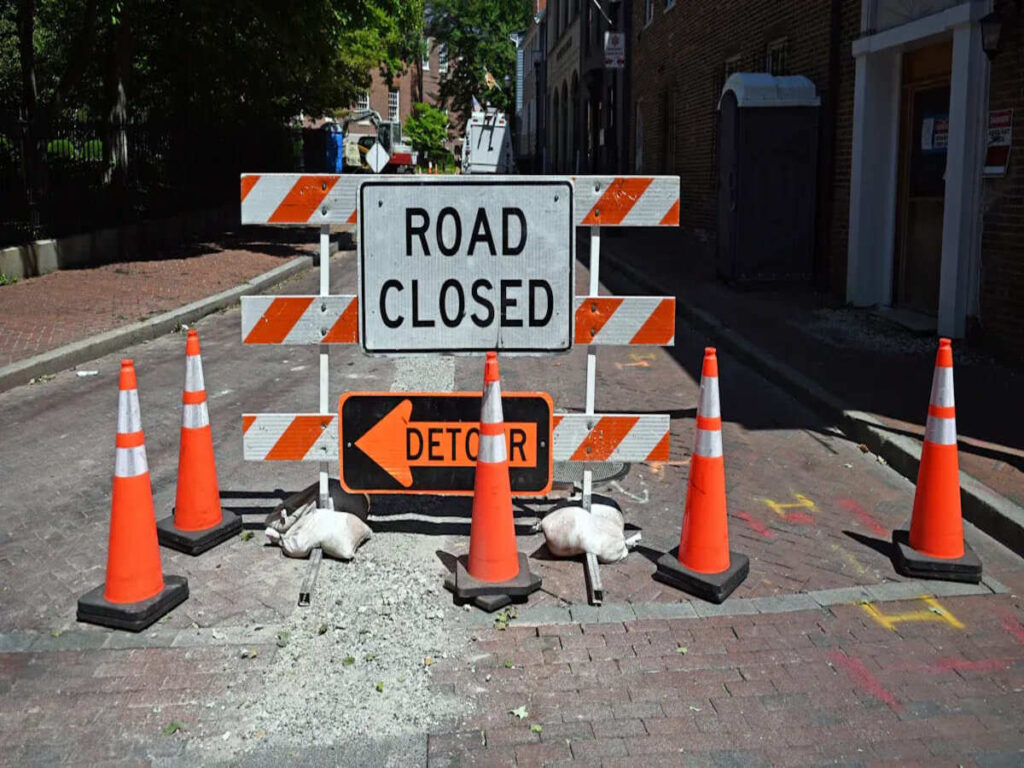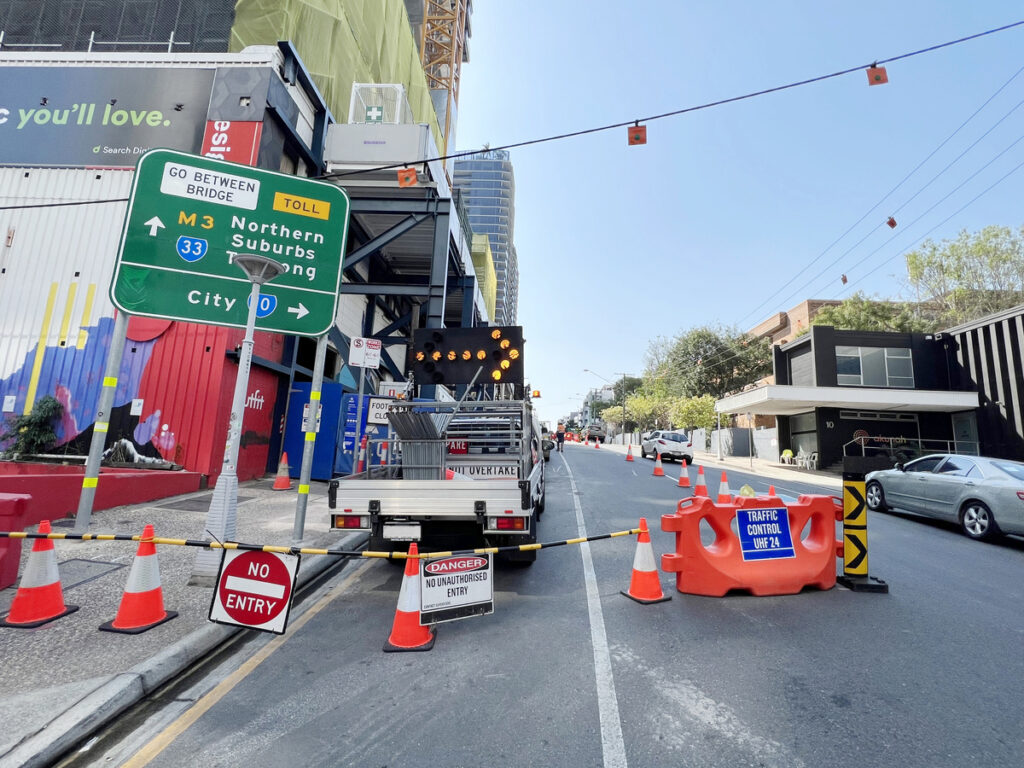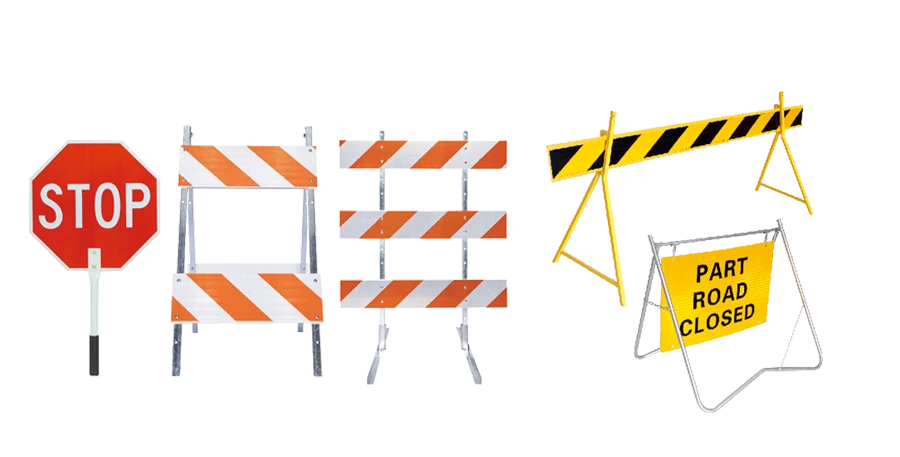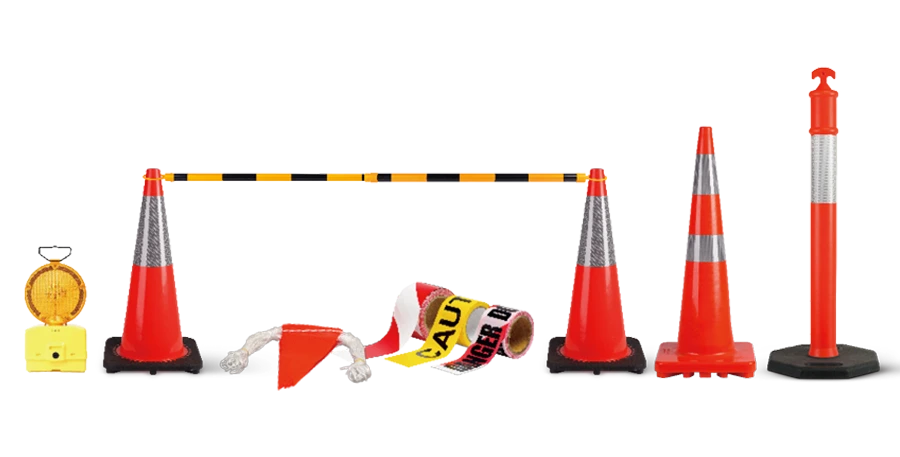
You encounter traffic cones every day, but their role goes far beyond marking construction zones. Reflective road cones play a vital part in keeping roads safe and accessible for everyone. Their bright colors and reflective bands make them highly visible, even in low-light conditions like fog or nighttime. These features help reduce accidents and injuries by clearly separating active traffic from work zones. Studies show that traffic calming measures, including cones, save an estimated 10.7 cents per vehicle mile by preventing collisions. By meeting accessibility standards, reflective road cones also ensure inclusivity for individuals with disabilities, making roadways safer for all.
Reflective road cones, like those from OPTsigns, are essential in promoting road safety by providing clear, visible boundaries in potentially hazardous zones. The bright colors and reflective strips ensure that drivers are aware of any obstacles or construction activities, even in challenging conditions. This visibility significantly reduces the risk of accidents, while also supporting accessibility for individuals with disabilities.
Understanding the ADA Requirements for Road Safety

ADA and Accessibility Standards
The Americans with Disabilities Act (ADA) sets clear guidelines to ensure public spaces, including roadways, are accessible to everyone. These standards focus on creating environments where individuals with disabilities can navigate safely and independently. For road safety, the ADA emphasizes features like accessible paths, curb ramps, and clear signage. These elements reduce barriers and make travel easier for all pedestrians.
Here’s a quick overview of key ADA requirements related to road safety and accessibility:
| Requirement Type | Description |
|---|---|
| Accessible paths of travel | Must be as close to general circulation paths as possible, minimizing additional distance. |
| Boarding ramps and bridgeplates | Required for safe access to transit facilities. |
| Bus stops and shelters | Must meet accessibility standards. |
| Curb ramps, doors, elevators, etc. | Essential for ensuring access to facilities. |
| Level boarding | Train doorways and station platforms must align to facilitate easy access for all passengers. |
| Restrooms, signs, public telephones | Must be accessible to individuals with disabilities. |
| U.S. DOT roles | Various administrations ensure compliance with ADA standards in transportation. |
These requirements highlight the importance of designing roadways and public spaces with inclusivity in mind.
Visual Accessibility
Visual accessibility plays a critical role in road safety. The ADA recognizes that individuals with visual impairments face unique challenges when navigating public spaces. Features like reflective road cones, tactile paving, and high-contrast signage help visually impaired pedestrians identify hazards and stay safe. Reflective road cones, for example, improve visibility in low-light conditions, making it easier for everyone to detect changes in traffic patterns or construction zones.
By prioritizing visual accessibility, you help create safer environments for all road users, especially those with partial or complete vision loss.
Impact of Non-compliance
Failing to meet ADA standards can have serious consequences. For individuals with disabilities, non-compliance creates unnecessary risks and limits their ability to move freely. Imagine a visually impaired pedestrian encountering a construction zone without reflective road cones or tactile warnings. This lack of accessibility increases the likelihood of accidents and injuries.
Non-compliance also affects communities. It can lead to legal penalties, damage public trust, and hinder efforts to create inclusive spaces. By adhering to ADA guidelines, you contribute to a safer, more equitable environment for everyone.
The Role of Traffic Cones in ADA Compliance
Reflectivity and Visibility
Traffic cones play a crucial role in ensuring road safety by enhancing visibility. Modern traffic cones use bright colors like orange or lime green, which stand out during the day. At night or in low-light conditions, reflective collars or strips bounce light back toward its source, making the traffic control cones visible to drivers and pedestrians. This feature is especially important in areas with heavy traffic or poor weather conditions, where visibility can be compromised.
Reflective road cones also help create temporary walkways and detours. These pathways keep pedestrians safe from hazards like construction zones or roadwork. In work zones, traffic control cones establish clear boundaries, ensuring drivers can spot them from a distance and adjust their speed or direction accordingly. By combining durable materials like PVC or rubber with reflective elements, traffic cones meet safety standards while remaining effective in various environments.
Improved Visibility for Visually Impaired Pedestrians
For individuals with visual impairments, reflective road cones provide an added layer of safety. Their bright colors and reflective bands make them easier to detect, even for those with partial vision. These traffic control cones guide pedestrians through temporary pathways, helping them avoid obstacles and navigate safely around construction zones.
In busy work zones, reflective cones reduce accident risks by clearly marking pedestrian pathways. They ensure that drivers and pedestrians can see and respond to changes in traffic patterns. This visibility is essential for creating an inclusive environment where everyone, regardless of ability, can move safely through public spaces.
Meeting ADA Guidelines
Reflective road cones align with ADA guidelines by improving accessibility and safety for all pedestrians. The ADA emphasizes the importance of clear, visible markers to help individuals with disabilities navigate public spaces. Reflective cones meet these requirements by enhancing visibility and creating safe pathways around hazards.
The materials used in these traffic control cones, such as retroreflective sheeting, ensure compliance with safety standards like those set by the Manual on Uniform Traffic Control Devices (MUTCD). Their design not only meets regulatory requirements but also contributes to a safer, more inclusive environment for everyone.
Additional Features for Enhancing Accessibility in Traffic Cones
Tactile Elements
Tactile elements on traffic cones can significantly improve accessibility for individuals with visual impairments. These features include raised patterns or textured surfaces that you can feel by touch. For example, traffic control cones with ridges or bumps allow visually impaired pedestrians to detect their presence using a cane or by hand. This tactile feedback helps you identify boundaries and avoid hazards in construction zones or other restricted areas.
Adding tactile elements to traffic cones also enhances their functionality in crowded or noisy environments. When visual or audible cues are insufficient, tactile features provide an additional layer of safety. You can rely on these elements to navigate safely, even in challenging conditions.
Audible Signals
Audible signals integrated into traffic cones can further enhance accessibility. These signals emit sounds, such as beeps or voice alerts, to guide pedestrians with visual or hearing impairments. For instance, a cone placed near a detour might produce a repetitive sound to indicate a change in the pathway. This feature ensures you stay aware of your surroundings and avoid potential dangers.
Audible signals are especially useful in high-traffic areas or during nighttime construction. They provide real-time information about hazards, helping you make safer decisions. By combining sound with other features, traffic cones become more inclusive and effective for all users.
Height and Design Considerations
The height and design of traffic cones play a crucial role in their accessibility. Taller traffic control cones are easier to spot, even from a distance. For visually impaired individuals, cones with a consistent height ensure better detection using mobility aids like canes. You benefit from designs that prioritize stability, preventing cones from tipping over in windy conditions.
Reflective road cones with ergonomic designs also improve usability. Features like weighted bases or stackable shapes make them practical for various environments. By adhering to ADA guidelines, these cones ensure safety and accessibility for everyone.
Case Studies and Real-World Applications
Successful Integration of Reflective Traffic Cones
Reflective traffic cones have proven their value in various real-world scenarios. You can see their effectiveness in mixed-use neighborhoods, where they separate bike lanes from vehicle traffic and define pedestrian zones during outdoor markets. This setup improves safety and ensures smooth traffic flow. Community events like local festivals also benefit from these cones. They organize pedestrian walkways and vehicle zones, reducing congestion and creating a safer environment for attendees.
In construction zones, reflective cones play a critical role. They reroute traffic during road closures, clearly marking paths for drivers and minimizing disruptions. Some projects even use connected traffic cones equipped with sensors. These cones analyze traffic conditions and display relevant messages on portable changeable message signs (PCMSs). This technology alerts drivers about upcoming work zones, enhancing safety for everyone on the road.
Positive Outcomes
The integration of reflective road cones in these scenarios has led to measurable improvements in safety and accessibility. Pedestrians and drivers alike benefit from reduced accidents and smoother navigation through temporary pathways. For visually impaired individuals, these cones provide clear markers that help them avoid hazards. Community feedback often highlights the increased sense of security and organization these cones bring to public spaces.
Cities that prioritize accessibility see long-term benefits. Safer roads encourage more people to walk or bike, reducing vehicle congestion and promoting healthier lifestyles. By using reflective cones, you contribute to a more inclusive and efficient transportation system.
Innovative Designs
Traffic cone designs continue to evolve to meet modern safety and accessibility needs. Some traffic safety cones now integrate smart technology, allowing them to interact with autonomous vehicles using LIDAR and radar. Others feature collapsible designs, making them easy to store and deploy during emergencies. Enhanced visibility remains a priority, with cones using brighter colors and advanced reflective materials to stand out in any environment.
These innovations ensure that traffic cones remain effective tools for road safety. Whether you’re managing a construction site or organizing a community event, these designs make it easier to create safe, accessible spaces for everyone.
Challenges and Solutions in Enhancing Accessibility
Challenges
Enhancing the accessibility of traffic cones comes with several challenges. Rising raw material costs increase production expenses. Manufacturers must find innovative ways to keep traffic safety cones affordable without compromising quality. Stricter regulations also demand higher performance standards. You may notice that traffic safety cones now need to meet enhanced benchmarks for visibility and durability, which pushes manufacturers to innovate.
Market competition adds another layer of complexity. Companies must differentiate their products by offering unique features. This competition benefits you as a consumer, but it also requires constant innovation from manufacturers. Emergency preparedness presents additional challenges. Traffic cones must be designed for quick deployment and high visibility to manage critical situations effectively. Meeting these demands while maintaining accessibility can be a difficult balancing act.
Solutions and Innovations
Manufacturers have introduced several innovative solutions to overcome these challenges. Smart traffic cones now interact with autonomous vehicles, improving safety in modern traffic systems. Some traffic safety cones feature collapsible designs, making them easy to store and deploy during emergencies. These designs save space and ensure readiness when you need them most.
Reflective materials continue to improve visibility, especially in low-light conditions. You might also encounter smart cones equipped with warning lights or sound alerts. These features activate during emergencies, providing real-time guidance to pedestrians and drivers. By combining advanced technology with practical design, these innovations make traffic cones more accessible and effective for everyone.
These solutions demonstrate how manufacturers address challenges while prioritizing safety and accessibility. As technology evolves, you can expect even more improvements in the design and functionality of traffic safety cones.
The Future of Accessible Traffic Cones
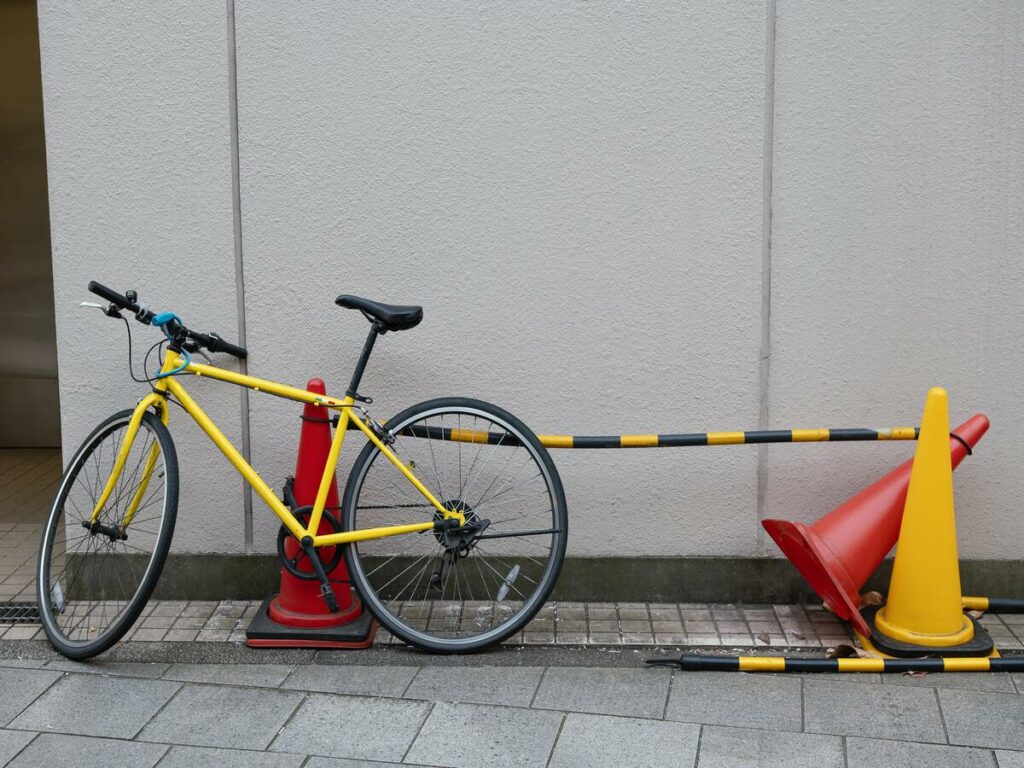
Evolving Standards and Regulations
The design of traffic cones continues to evolve as new trends and regulations emerge. You can expect future standards to focus on sustainability, stricter safety measures, and advanced technology integration. Here’s a breakdown of these trends:
| Trend/Standard | Description |
|---|---|
| Sustainability | The industry is moving towards eco-friendly traffic cones made from recyclable materials. |
| Stricter Safety Regulations | Anticipated regulations will demand higher safety standards for traffic cones. |
| Smart Technology Integration | Future cones will incorporate sensors and IoT capabilities for better communication with systems. |
These changes aim to make traffic cones safer, more environmentally friendly, and better suited for modern roadways. By staying informed about these trends, you can contribute to creating safer and more accessible public spaces.
Smart Traffic Cones
Smart traffic cones represent the next big leap in road safety and accessibility. These traffic safety cones use advanced technologies to improve their functionality and effectiveness. Here are some key features you might see in smart cones:
- Sensors and IoT connectivity enhance traffic management by providing real-time data.
- Interaction with autonomous vehicles through LIDAR and radar ensures accurate detection.
- Warning lights and sounds activate during emergencies, alerting drivers and pedestrians.
- Automated deployment systems reduce roadwork disruptions and keep workers safe.
- LED lights improve visibility in low-light conditions, making roads safer at night.
Smart cones use technologies like LIDAR and radar to ensure self-driving cars can accurately detect and interpret their presence. This innovation enhances safety and reliability on modern roadways.
These advancements make smart traffic cones a valuable tool for improving road safety and accessibility, especially in high-risk areas like construction zones.
Incorporating New Technologies
New technologies are transforming traffic cones into multifunctional safety devices. You’ll notice features like LED lighting and reflective materials that enhance visibility in all conditions. Some traffic safety cones now include collapsible designs, making them easier to store and deploy. Eco-friendly materials are also becoming more common, aligning with sustainability goals.
In critical situations, smart cones can activate warning lights or sounds to alert drivers and pedestrians. This feature helps prevent accidents and ensures smoother traffic flow during emergencies. By combining these technologies, traffic cones are becoming more effective and compliant with ADA standards.
These innovations demonstrate how traffic cones are evolving to meet the demands of modern roadways. As these technologies continue to develop, you can expect even greater improvements in safety and accessibility.
Reflective road cones play a vital role in making roads safer and more inclusive. Their enhanced visibility and accessibility features help protect all road users, including individuals with disabilities. By using these traffic safety cones, you contribute to creating safer pathways and reducing risks in public spaces.
You can encourage municipalities and manufacturers to prioritize these tools. Supporting their use ensures compliance with ADA standards and promotes inclusivity. Together, we can build roadways that are safe and accessible for everyone.
